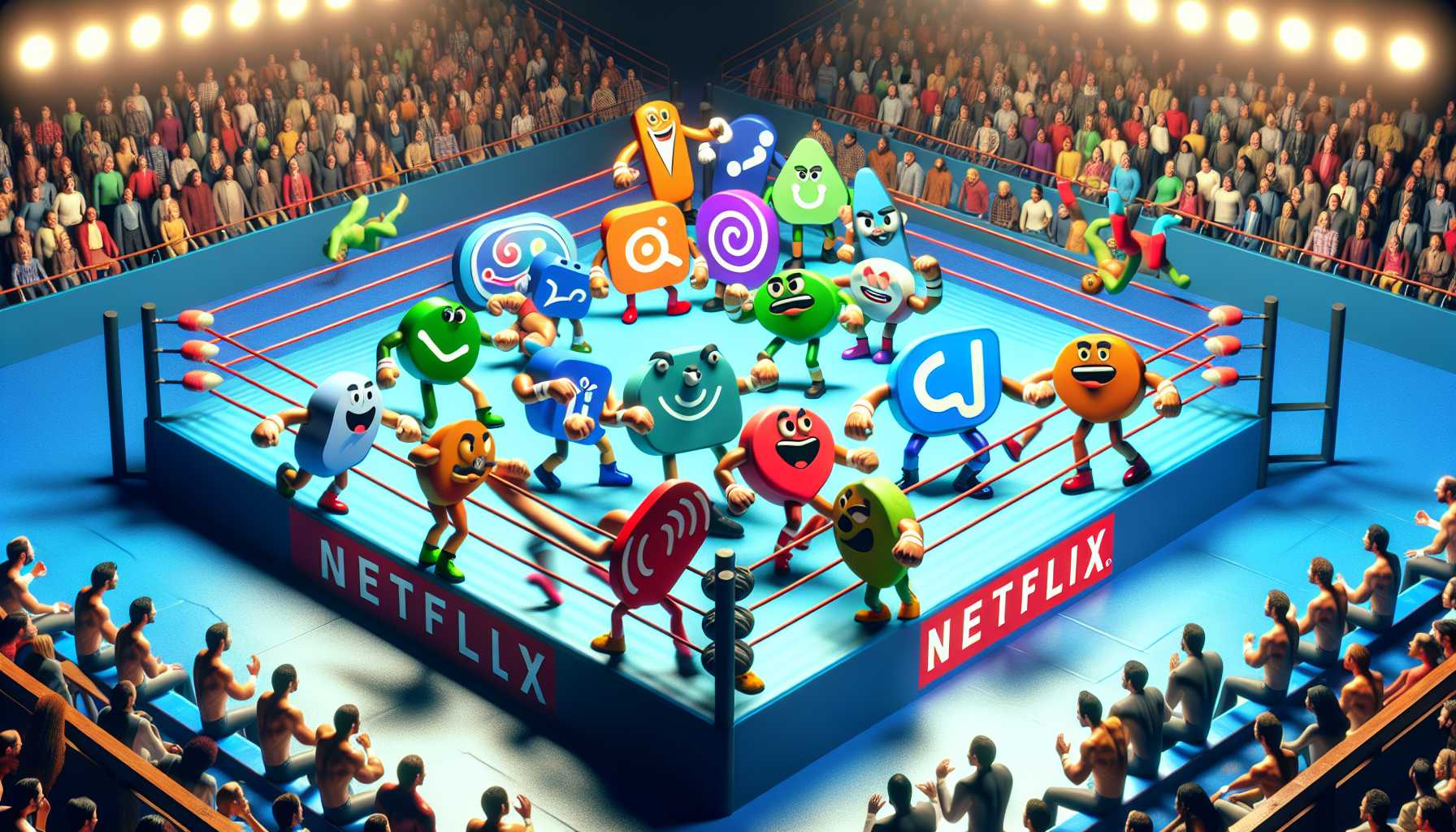Deepfakes Debacle: The Unchecked Virality of AI-Created Images
 The digital world went into a frenzy as AI-generated deepfakes of celebrities like Taylor Swift stormed social networks, leaving moral and legal quandaries in their wake. The wildfire spread of these images underscores an alarming aspect of AI technology: its misuse for creating explicit, non-consensual content. Despite certain platforms’ policies banning such synthetic media, the challenge to enforce such rules persists. The cat-and-mouse game of policy vs. proliferation continues to play out in front of our very eyes, sparking outrage and concern. Swift’s fanbase catapulted into action, flooding hashtags with legitimate content in a bid to smother the fakes, a commendable effort displaying the power of community in quelling digital distress. The critical issue here lies not only with the platforms’ moderation capabilities but also with the very nature of AI image generators. While some AI tools restrict creation of nude, pornographic or realistic celebrity images, others offer no barriers, plunging us into ethical abysses.
The digital world went into a frenzy as AI-generated deepfakes of celebrities like Taylor Swift stormed social networks, leaving moral and legal quandaries in their wake. The wildfire spread of these images underscores an alarming aspect of AI technology: its misuse for creating explicit, non-consensual content. Despite certain platforms’ policies banning such synthetic media, the challenge to enforce such rules persists. The cat-and-mouse game of policy vs. proliferation continues to play out in front of our very eyes, sparking outrage and concern. Swift’s fanbase catapulted into action, flooding hashtags with legitimate content in a bid to smother the fakes, a commendable effort displaying the power of community in quelling digital distress. The critical issue here lies not only with the platforms’ moderation capabilities but also with the very nature of AI image generators. While some AI tools restrict creation of nude, pornographic or realistic celebrity images, others offer no barriers, plunging us into ethical abysses.
Midnight Blizzard: The Cold Grip of Russian Cyber Espionage
 Hewlett Packard Enterprise’s revelations about its cloud-based email system being compromised by Midnight Blizzard, a hacking group with alleged Russian intelligence ties, ripped through the tech community. This breach was not an isolated event; Midnight Blizzard, also known as APT29 or Cozy Bear, has a storied past in cyber infiltration, including the infamous DNC and SolarWinds attacks. What’s startling about these cases is the method of infiltration—leveraging compromised accounts to access sensitive information. This activity points to an unsettling trend of high-level digital espionage capable of sneaking past even the most robust defenses. The unsettling dance between cybersecurity and cyberattacks is a vivid reminder of the continuous arms race in digital security. And as companies like HPE deal with the aftermath of data exfiltration, it reiterates the importance of vigilant, innovative cyber defense measures to protect sensitive data.
Hewlett Packard Enterprise’s revelations about its cloud-based email system being compromised by Midnight Blizzard, a hacking group with alleged Russian intelligence ties, ripped through the tech community. This breach was not an isolated event; Midnight Blizzard, also known as APT29 or Cozy Bear, has a storied past in cyber infiltration, including the infamous DNC and SolarWinds attacks. What’s startling about these cases is the method of infiltration—leveraging compromised accounts to access sensitive information. This activity points to an unsettling trend of high-level digital espionage capable of sneaking past even the most robust defenses. The unsettling dance between cybersecurity and cyberattacks is a vivid reminder of the continuous arms race in digital security. And as companies like HPE deal with the aftermath of data exfiltration, it reiterates the importance of vigilant, innovative cyber defense measures to protect sensitive data.
Streaming Titans Tussle: Netflix Clinches WWE, Spotify Wrestles with Apple, and Google Settles a Score
 In the bustling landscape of streaming, Netflix’s 10-year strategic alliance with WWE demonstrates the unwavering push for content dominance. The massive influx of new subscribers for Netflix mirrors the gargantuan nature of this deal, and it’s sure to resonate throughout the Subscription Video On-Demand (SVOD) cosmos. Simultaneously, Spotify’s maneuvers under the upcoming Digital Markets Act (DMA) represent a pivotal shift in the power dynamics of app ecosystems. Up until now, Apple’s grasp has been firm, but with the enforcement of the DMA, Spotify, and its ilk foresee a horizon where their wings are no longer clipped by the tech giant’s stringent policies. In another corner, Google has grappled with and settled a substantial patent lawsuit with Singular Computing. Such settlements and the accompanying financial implications illustrate the shadow boxing that often happens in the patented tech space, as giants like Google navigate the high-stakes landscape of intellectual property rights.
In the bustling landscape of streaming, Netflix’s 10-year strategic alliance with WWE demonstrates the unwavering push for content dominance. The massive influx of new subscribers for Netflix mirrors the gargantuan nature of this deal, and it’s sure to resonate throughout the Subscription Video On-Demand (SVOD) cosmos. Simultaneously, Spotify’s maneuvers under the upcoming Digital Markets Act (DMA) represent a pivotal shift in the power dynamics of app ecosystems. Up until now, Apple’s grasp has been firm, but with the enforcement of the DMA, Spotify, and its ilk foresee a horizon where their wings are no longer clipped by the tech giant’s stringent policies. In another corner, Google has grappled with and settled a substantial patent lawsuit with Singular Computing. Such settlements and the accompanying financial implications illustrate the shadow boxing that often happens in the patented tech space, as giants like Google navigate the high-stakes landscape of intellectual property rights.
The Musk Maneuver: A Quest for Power Amidst Shareholder Scrutiny
 Tesla’s latest drama involves Elon Musk’s bid for super-voting shares—his latest gambit in a long-standing ambition to cement his influence in an AI-fueled future. Musk’s machinations are met with widespread skepticism amid concerns about consolidating too much power in his idiosyncratic hands, a setup that may deter the company’s trajectory or prioritize his whims over shareholder interests. This quest comes amid financial undercurrents rocking Tesla, with the company witnessing stocks plunge post weaker earnings reports. The tumultuous corporate governance waters Tesla is navigating exemplifies the turbulent seas even the most innovative companies must sail.
Tesla’s latest drama involves Elon Musk’s bid for super-voting shares—his latest gambit in a long-standing ambition to cement his influence in an AI-fueled future. Musk’s machinations are met with widespread skepticism amid concerns about consolidating too much power in his idiosyncratic hands, a setup that may deter the company’s trajectory or prioritize his whims over shareholder interests. This quest comes amid financial undercurrents rocking Tesla, with the company witnessing stocks plunge post weaker earnings reports. The tumultuous corporate governance waters Tesla is navigating exemplifies the turbulent seas even the most innovative companies must sail.
Cozy Bear’s Cyber Shenanigans: HPE and Microsoft Compromise Reveals Threat Landscape
 The sophisticated cyber incursions of Midnight Blizzard, targeting top-tier entities like HPE and Microsoft, paint a portrait of a dynamic and ominous threat landscape. Serving as a stark reminder of the persistently escalating cyber warfare spectrum, these data heists place enormous pressure on multinational corporations to fortify their cyber battlements against such unrelenting foes. The interrelation between such breaches, if any, represents a complex web of digital espionage and cyber warfare. With high-stakes information at risk, HPE’s strategic movement post-breach, alongside law enforcement collaboration, is a testament to the gravitas of secure digital infrastructure in today’s interconnected world. In conclusion, as we trek through the rugged terrain of technological advancements and their misuse, it becomes evident that our digital society is bound to face challenges that will put our collective ingenuity to the test. It’s up to us, as stakeholders in this cyber ecosystem, to keep the dialogue going, focus on creating resilient security measures, and maintain the ethical use of technology to ensure a secure, beneficial future for all.
The sophisticated cyber incursions of Midnight Blizzard, targeting top-tier entities like HPE and Microsoft, paint a portrait of a dynamic and ominous threat landscape. Serving as a stark reminder of the persistently escalating cyber warfare spectrum, these data heists place enormous pressure on multinational corporations to fortify their cyber battlements against such unrelenting foes. The interrelation between such breaches, if any, represents a complex web of digital espionage and cyber warfare. With high-stakes information at risk, HPE’s strategic movement post-breach, alongside law enforcement collaboration, is a testament to the gravitas of secure digital infrastructure in today’s interconnected world. In conclusion, as we trek through the rugged terrain of technological advancements and their misuse, it becomes evident that our digital society is bound to face challenges that will put our collective ingenuity to the test. It’s up to us, as stakeholders in this cyber ecosystem, to keep the dialogue going, focus on creating resilient security measures, and maintain the ethical use of technology to ensure a secure, beneficial future for all.





